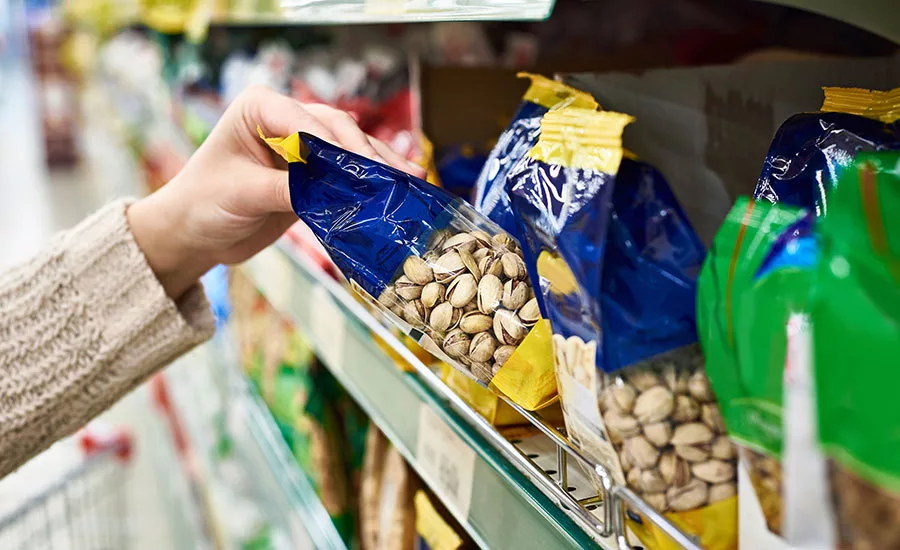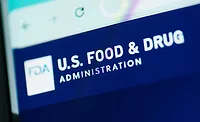Packaging
The Use of Printing Inks for Food Packaging in the United States

The use of printing inks for food packaging in the U.S. presents some interesting regulatory quandaries. Whereas substances that are expected to migrate to food are defined under the Federal Food, Drug, and Cosmetic Act of 1938 as food additives and require regulatory clearance by the U.S. Food and Drug Administration (FDA) for use (if not subject to an exemption), there is, in fact, no specific regulation that permits the use of a printing ink on packaging. There are certainly many instances in which a printing ink may be considered exempt from the need for regulation because it is not expected to migrate to food (such as a printed label on a canned food product). On the other hand, not everything that is printed on the outside of a food package can be considered to be separated by a functional barrier that will prevent its migration to food. What to do in this case? There is the rub!
The Complexity of Printing Inks
Printing inks are complex mixtures that are typically made up of colorants, binders, solvents, and additives, such as plasticizers, antioxidants, and the like. There are no regulations that clear specific ink formulations for use on food packaging; rather, some common components of inks may be cleared under volume 21 of the Code of Federal Regulations (C.F.R.), including Section 178.3297 (“Colorants for polymers”) or, if used in paper applications, under 21 C.F.R. Section 176.170 (“Components of paper and paperboard in contact with aqueous and fatty foods”). Colorants also may be permitted for their intended use under a Threshold of Regulation exemption, a prior sanction, or a Food Contact Notification (FCN).
Clearances for color additives, which are defined as substances added to food and intended to impart color, may also in some cases be permitted for use in indirect applications such as packaging. In addition, other components of printing inks may be the subject of separate stand-alone regulations. For example, a polyolefin carrier for an ink may be covered by 21 C.F.R. Section 177.1520 (“Olefin copolymers”).
The manner in which printing inks are used may result in their transfer to food in essentially one of two ways. First, printing inks are usually applied on the side of a packaging film or article away from the food. However, depending upon multiple factors, components of the ink could potentially migrate through the film or article into the food. These factors include the amount of ink per surface unit, substrate type and thickness, type of food or beverage, expected maximum shelf life, and processing conditions (sterilization, pasteurization, etc.). Other variables relate to the formulation and application of printing inks, such as the types of additives used, the level of residual solvents, and whether the application involves conventional drying or energy curing (UV lamp).
The second way transfer may occur is by way of set-off of the printed outer side to the food contact surface in a stack or reel (e.g., a stack of printed cups or a printed film roll). This can be impacted by the completeness of the cure, time and pressure conditions in the stack or reel, and storage times and conditions. How each situation is handled can differ. We will look at this second one first.
Set-Off and Good Manufacturing Practices
In the case of set-off, this is not considered a food additive situation, as the intended use of the ink is not to transfer to food; it results only because of the manufacturing limitations that arise from the need to package, ship, and store the food contact articles.
In the U.S., this is considered a situation subject to Good Manufacturing Practices (GMPs) and FDA GMP regulatory requirements for packaging materials, 21 C.F.R. Section 174.5, “General provisions applicable to indirect food additives.” Among other things, this regulation requires that food contact substances be of a purity suitable for their intended use, not impart substances to food that may cause it to be harmful or deleterious to health, or not impart substances that may result in an off taste or odor to food. In other words, the rule mandates that the packaging material does not adulterate the food product with which it is used.
Looking for quick answers on food safety topics?
Try Ask FSM, our new smart AI search tool.
Ask FSM →
In the case of printing inks and set-off, GMPs generally call for inks used on the outer side of a package to be cured sufficiently or otherwise applied in such a way that any transfer of the inks to the food contact side will be controlled as may be economically and technologically feasible under the circumstances while reducing transfer to the extent needed such that adulteration of the food product will be prevented. Keep in mind that the ink does not have to be visible on the food contact side to raise an issue. Even trace levels of the ink’s components that are not visible to the eye could be problematic, depending upon their identity. On the other hand, transfer of trace levels that are controlled as reasonable under the circumstances of use may be sufficient if no adulteration of the food product is expected.
Functional Barriers
In the first example of transfer described above in which printing inks are applied on the outside of a package and separated from the food by one or several intervening layers, the suitable regulatory status of the ink depends on the barrier properties of the packaging material relative to the absorption and adsorption properties of the food and other factors. Unlike the set-off situation, ink used on a packaging material that does not have sufficient barrier properties could constitute a food additive issue, which means that the transferring components of the ink would need to be the subject of an appropriate clearance by FDA or exempt from the need for a clearance.
With respect to how FDA regulates functional barriers, the agency does not specifically define this term, although a number of FDA’s food additive regulations incorporate the concept of a “functional barrier.”¹ In Section 177.1390, FDA identifies aluminum foil as an effective barrier to migration of materials used on the non-food contact side of the foil. It has also recognized glass, and PET in some circumstances, to be sufficient barrier materials as well.² Layers made from other, non-PET polymers should be assessed case by case through testing or mathematical modeling to determine whether they may be expected to act as a sufficient functional barrier in the application of interest.
Testing to Determine Migration Potential
In situations in which it may be difficult to determine the potential for transfer of printing ink components to food, whether by way of set-off or otherwise, it may be necessary to undertake some residual or migration studies. Residual studies can be conducted specifically to determine whether by-products or impurities in the ink or ink components are present at such levels that they could create a concern if migration were to occur. In that case, migration studies simulating the intended conditions of use may need to be conducted to determine whether the potential level of migration is (in the case of a set-off situation) sufficient to present a suitable purity issue or (in the case of printing on the outside of the food contact layer or article) whether there is a potential for migration of one or more components to food.
In running the migration study, it will be necessary to use an analytical method with a suitable limit of detection, so as to conclude in the case of residual impurities that migration is sufficiently low that no suitable purity issue is raised based on the available toxicology data and projected dietary intake. To judge whether the intended use of a printing ink on food packaging is a food additive, the limits of detection must be sufficiently low so as to make it reasonable to conclude that no migration of the ink components is expected to occur, again in light of the toxicology data and projected exposure levels. Further, in instances in which migration of the ink components may be found, it may be possible to reach a conclusion that the use may be considered generally regarded as safe.
Ink Components Becoming More Highly Regulated
Printing inks have been the subject of a fair amount of scrutiny in Europe over the years and are now the subject of enhanced regulation as well. This could be a sign of what to eventually expect in the U.S. For one, Switzerland enacted an ordinance several years ago to regulate food packaging printing inks. The Swiss ordinance has to some extent become a de facto standard for the evaluation of printing inks in the European Union (EU) since there are no harmonized requirements at the EU level. Although certain uses of printing inks are exempt from the requirements of the ordinance, for example, when migration of the ink to food is “impossible” as in the case of printing on the outside of an aluminum can or set-off via a gas phase can be ruled out, printing inks must otherwise be the subject of a positive list of components that include binders, colorants and pigments, solvents, additives, and photoinitiators.
The positive list of components is further divided into Part A (evaluated substances) and Part B (nonevaluated substances). The nonevaluated substances may be used only if no transfer to food occurs at a detection limit of 0.01 mg/kg and they are not carcinogenic, mutagenic, or toxic to reproduction. However, substances subject to the positive list requirement must be listed in either Part A or B (or in Annex 2) before they may be used in printing inks intended for use in Switzerland.
Germany also started working several years ago on a draft printing inks ordinance (formally, the “Twenty-first Ordinance amending the Consumer Goods Ordinance”), which in large measure modelled the Swiss ordinance. However, when the European Commission (EC) announced in November 2016 that it planned to develop a harmonized measure on printed food contact materials (FCMs), Germany suspended the work. It appears that this suspension may be lifted, though, as the EC has placed its work on a harmonized measure on hold.
The draft German text would have applied to printing inks and printing varnishes applied on both the food contact and nonfood contact sides of food packaging. Varnishes other than printing varnishes were excluded from its scope, as were colorants to dye FCMs, as well as decorative inks for ceramic FCMs applied in a combustion process.
Importantly, FDA is reviewing its requirements for printing ink components that are used for the noncontact side of food packaging. Speaking at Keller and Heckman’s Food Packaging Law Seminar this past October, Kenneth McAdams, a Consumer Safety Officer in FDA’s Division of Food Contact Substances, recommended that notifiers schedule a prenotification consultation with the agency before submitting an FCN for components of printing ink for packaging exteriors. He explained that FDA is reviewing the potential for migrations of these substances into food and the safety of the large number of substances in printing ink formulations.
Individual U.S. states are also looking at printing ink components. A January 2020 draft report to the Washington State Legislature by the Washington State Department of Ecology (DOE) listed printing inks containing polychlorinated biphenyls (PCBs) as draft priority consumer products under the state’s Safer Products Program. PCBs were listed as a priority chemical in 2015 due to their toxic effects to the immune, reproductive, nervous, and endocrine systems in people and other organisms, according to the department.
While most intentional uses of PCBs have been banned in the U.S. since 1979, the Washington DOE’s 2020 report noted that printing inks are a significant source of unintentionally generated PCBs. This is owing to pigments and other compounds becoming contaminated with PCBs because of nonspecific chlorination processes in heated reactions involving carbon and chlorine. The report specifically mentioned diarylide yellows, phthalocyanines, and titanium dioxide as affected pigments.
Conclusion
Since formulated printing inks, per se, are not covered under a single regulation, each ink and intended use presents a unique situation with respect to its FDA status. However, as discussed above, there may be several options for establishing a suitable FDA status for a particular printing ink. Although as further inquiries into certain printing ink components arise, additional regulatory scrutiny may be on the horizon.
References
1. Examples include 21 C.F.R. § 175.105 (“Adhesives”) and 21 C.F.R. § 177.1390 (“Laminate structure for use at temperatures of 250 °F and above”).
George G. Misko, Esq., is a partner in the Washington, DC, office of Keller and Heckman LLP.









